
ECE Advisory Council
The School of Electrical and Computer Engineering's Advisory Council was created to help guide the School through the challenges of the next few years, and is made up of members who represent a broad spectrum of interests and backgrounds. The Advisory Council meets annually to discuss important issues facing the School of Electrical and Computer Engineering. We have found that outside evaluations help us keep our programs fresh and forward moving.
The Advisory Council is composed of people (often alumni) from industry, research labs, and government services. Members normally serve a three-year term and review our programs, new hires, and the School's direction and resources at an annual meeting during the spring semester.
A typical agenda would include welcoming talks from the Dean of the College of Engineering and the Director of the School of Electrical and Computer Engineering. Presentations about our instructional programs are given by the director of graduate studies, the associate director and director of undergraduate studies, and the assistant director of the M.Eng. program. New faculty give presentations on their work. The second day includes executive sessions, informational talks by faculty, and exit interviews. As a follow-up to the meetings, the council chair provides an appraisal on their findings including commendations, concerns, and recommendations.
Meet our Advisory Council Members
Anima Anandkumar: Professor, Caltech & Director of Machine Learning Research, NVIDIA
Click to Open Anima Anandkumar holds dual positions in academia and industry. She is a Bren professor at Caltech Computation & Mathematical Sciences (CMS) department and a director of machine learning research at NVIDIA. At NVIDIA, she is leading the research group that develops next-generation AI algorithms. At Caltech, she is the co-director of Decision, Optimization, and Learning at the California Institute of Technology (DOLCIT) and co-leads the AI4Science initiative, along with Yisong Yue.
Anima Anandkumar holds dual positions in academia and industry. She is a Bren professor at Caltech Computation & Mathematical Sciences (CMS) department and a director of machine learning research at NVIDIA. At NVIDIA, she is leading the research group that develops next-generation AI algorithms. At Caltech, she is the co-director of Decision, Optimization, and Learning at the California Institute of Technology (DOLCIT) and co-leads the AI4Science initiative, along with Yisong Yue.
She has spearheaded the development of tensor algorithms, first proposed in her seminal paper. They are central to effectively processing multidimensional and multimodal data, and for achieving massive parallelism in large-scale AI applications.
Prof. Anandkumar is the youngest named chair professor at Caltech, the highest honor the university bestows on individual faculty. She is recipient of several awards such as the Alfred. P. Sloan Fellowship, NSF Career Award, Faculty fellowships from Microsoft, Google and Adobe, and Young Investigator Awards from the Army research office and Air Force office of sponsored research. She has been featured in documentaries and articles by PBS, wired magazine, MIT Technology review, yourstory, and Forbes.
Anima received her B.Tech in Electrical Engineering from IIT Madras in 2004 and her PhD from Cornell University in 2009. She was a postdoctoral researcher at MIT from 2009 to 2010, visiting researcher at Microsoft Research New England in 2012 and 2014, assistant professor at U.C. Irvine between 2010 and 2016, associate professor at U.C. Irvine between 2016 and 2017, and principal scientist at Amazon Web Services between 2016 and 2018.
John Balen: General Partner, Canaan Partners
Click to Open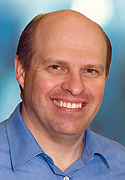 John Balen understands entrepreneurs. Since joining Canaan in 1995, John has worked with some of the smartest people in the technology industry to build high-performance companies such as Commerce One, which brought B2B ecommerce to the masses, eStamp, the pioneer of Internet postage, Intraware the leading provider of electronic license delivery and management, and Rightpoint, a real-time customer analytics software provider, acquired by Epiphany.
John Balen understands entrepreneurs. Since joining Canaan in 1995, John has worked with some of the smartest people in the technology industry to build high-performance companies such as Commerce One, which brought B2B ecommerce to the masses, eStamp, the pioneer of Internet postage, Intraware the leading provider of electronic license delivery and management, and Rightpoint, a real-time customer analytics software provider, acquired by Epiphany.
At Canaan, John focuses on investments in communications & mobility, and next-generation enterprise technology companies that are disrupting the balance of traditional markets. His portfolio includes ID Analytics, which offers the nation’s only real-time fraud prevention system for enterprises. He also invests in digital media companies that empower the consumer through web-based services, such as Blurb.com, a revolutionary company changing the face of publishing by letting anyone easily create and sell bookstore-quality books.
Before joining Canaan Partners, John held a variety of operational and financial roles, where he learned both how to build companies from the ground up and how to fund them. He served as a Managing Director of Horsley Bridge Partners, a multi-billion dollar private equity firm in San Francisco. During his nine-year tenure at Horsley Bridge, John was responsible for a wide spectrum of investments in technology companies, as well as many venture capital and buyout partnerships. Earlier in his career, John was a sales applications engineer at fiber communications startup Codenoll Technology Corp. and an engineer at Digital Equipment Corp.
John currently serves on the boards of innovative digital media firms Blurb and Cardlytics, and enterprise technology firms Echopass, ezRez, ID Analytics and SOASTA.
John received a BS in electrical engineering and an MBA from Cornell University. A firm believer in the value of education, John is the Chair of the Strategic Planning Committee, and as a board member serves on the Executive Committee of his children’s school. John frequently donates time and money to educational causes.
Richard Calle: Head of AI Research Business Development, Microsoft
Click to Open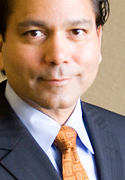 Rick is a veteran of both large established technology corporations as well as multiple Silicon Valley startups. His experience bridges multiple business functions steeped in technology, including product development, product management, marketing and business development.
Rick is a veteran of both large established technology corporations as well as multiple Silicon Valley startups. His experience bridges multiple business functions steeped in technology, including product development, product management, marketing and business development.
Currently focused on the business and technologies of AI and computing, Rick’s mission is to help Microsoft Research to identify, incubate, partner (Academic & Industry) and drive the next-horizon of business opportunities. He helps Microsoft to deliver cutting-edge Artificial Intelligence/Deep Learning/Machine Learning technologies into products that can benefit everyone on the planet. Engaging the business levers around making AI computing Fast, Power-efficient, and Small, Rick’s focus is on connecting the dots from new algorithmic workloads to useful new use-case applications. This includes external and internal partnering and evaluation of innovative computing architectures, new algorithmic techniques, and unlocking the business value proposition.
Rick previously lead Qualcomm Research and Development business, partnerships and product strategy for AI/Deep Learning technologies and emerging AI hardware acceleration. Technologies that will help make the world's best next-generation Smartphones, Automotive and IoT embedded devices. His focus areas were the business applications and power-efficient hardware acceleration of deep learning and machine learning workloads; frameworks for power-aware multi-core heterogenous parallel computing and machine-learning based behavioral anomaly detection for network security.
Prior to Microsoft and Qualcomm, Rick was most recently Vice President of Marketing at iKoa Corporation, a semiconductor startup focused on delivering an ultra low-power scalable many-core processor combined with unique new software algorithms for voice enhancement, vision computing and video processing. Rick led product marketing, and built early customer engagements through to prototypes for the company's mobile and consumer electronics customers.
At startup ArtX, Rick led the marketing efforts for this semiconductor startup delivering the first integrated 3D graphics and core logic chipset with polygon acceleration for PCs, and a custom GPU chipset product line for Nintendo. The company was successfully acquired by ATI (now AMD).
In his tenure at startup NeoMagic, Rick led the product marketing efforts that took the company to a #1 position in the notebook multimedia chip business, culminating in a successful IPO of the company. Rick returned to NeoMagic as Vice President of Product Marketing and Business Development, responsible for focusing the marketing and product efforts on the emerging business of Mobile TV for cellular handsets. The company was the first to deliver a single-chip "System-on-chip" semiconductor solution for mobile TV supporting various standards, with multiple mobile phone customer engagements in Taiwan, Japan and Europe.
Prior to that he worked with S3, a startup and IPO exit with the first consumer 3D GPU chips for PCs, and led a team of technical marketing/applications engineers at Advanced Micro Devices.
Rick's technical background includes designing avionics at Northrop Aircraft, and implementing embedded processors and software for consumer audio and security applications. Rick completed his B.S. Electrical Engineering in 1983 at Cornell University. He is an alumnus of the University of California Berkeley Haas School of Business, having completed the Berkeley Executive Program in 2005.
Frank Close: President, Guardian Security Systems, Inc.
Click to Open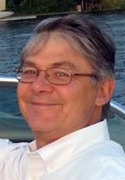 Upon completion of a Masters Degree in Electrical Engineering from Cornell, Frank worked on the design of control and instrumentation with a Boston firm, Stone and Webster Engineering. At the end of the project, he was hired at Nuclear Plant in Oswego, New York.
Upon completion of a Masters Degree in Electrical Engineering from Cornell, Frank worked on the design of control and instrumentation with a Boston firm, Stone and Webster Engineering. At the end of the project, he was hired at Nuclear Plant in Oswego, New York.
He went back to school in Boston for his MBA when a great opportunity came his way. His father offered to sell him a little company, in Seattle, Guardian Security Systems, Inc. Guardian Security had a grand total of four employees and was losing $60,000 per year. With only two classes left to complete his MBA, he chose to take this unique chance to launch into business, and accepted the great entrepreneurial challenge created by his father's offer.
Over the years Guardian Security has grown to a company of 100+ employees and $14,000,000 in sales per year. Guardian Security's corporate offices are located in Seattle, WA with branch offices in Bellingham and the Kitsap Peninsula. Protection of Life and property is the core business with expertise in Fire Alarms, Card Access Systems, Intrusion alarms and Camera systems.
Guardian owns a U.L. Listed central station, run as a separate division. It provides Alarm monitoring for over 28,000 customers.
Frank's Cornell Education has, among other things, taught him to define problems and then to solve them. It taught him to never be afraid of anything technical. His father taught him that money spent on education was always a good thing.
Since returning to the Pacific Northwest, he has thoroughly enjoyed all the area has to offer, sailing, skiing, hiking, biking, and swimming. Frank has been married for 34 years and has three children now 30, 27, 21, one grandchild born in March 2009. He has had the great adventure of building and running a fascinating business.
Virantha N. Ekanayake: Chief Technology Officer, Achronix Semiconductor Corporation
Click to Open Virantha Ekanayake is a founder and CTO at Achronix Semiconductor Corporation, based in Santa Clara, California, where has been developing high-speed field programmable gate array (FPGA) chips since 2006. Prior to Achronix, Virantha was an Assistant Professor in the Department of ECE at Johns Hopkins University where he headed the Asynchronous VLSI and Architecture group.
Virantha Ekanayake is a founder and CTO at Achronix Semiconductor Corporation, based in Santa Clara, California, where has been developing high-speed field programmable gate array (FPGA) chips since 2006. Prior to Achronix, Virantha was an Assistant Professor in the Department of ECE at Johns Hopkins University where he headed the Asynchronous VLSI and Architecture group.
Virantha has been designing multi-GHz custom and reprogrammable logic for over 20 years. From high-level system specification to back-end custom and semi-custom circuit design, he has been involved in the reprogrammable fabric design for FPGAs in advanced nodes ranging from 90nm down to 7nm, and has numerous patents and publications in this field. He also heads Achronix's patent and intellectual property development group.
Dr. Ekanayake received his A.B. and B.E. from Dartmouth College, and his M.S. and Ph.D. in ECE from Cornell University.
Mikko Hakkarainen: Director, Lutron
Click to Open Dr. Mikko Hakkarainen is originally from Finland (curiously though, he never worked at Nokia!) and he found his way to the American shores via UWCA, a prestigious international high school in Wales, UK, and concentrated on Electrical Engineering at MIT, receiving his S.B., S.M., and PhD degrees from the Institute. He is active in student education and outreach through MIT’s Educational Council, the Florida Engineering Society, and other local school based organizations.
Dr. Mikko Hakkarainen is originally from Finland (curiously though, he never worked at Nokia!) and he found his way to the American shores via UWCA, a prestigious international high school in Wales, UK, and concentrated on Electrical Engineering at MIT, receiving his S.B., S.M., and PhD degrees from the Institute. He is active in student education and outreach through MIT’s Educational Council, the Florida Engineering Society, and other local school based organizations.
Mikko joined Lutron Electronics in 2009 after over two decades of high performance analog and digital IC design and management, and is now enjoying the challenge of helping create the world’s highest quality lighting control products. He is currently responsible for growing Lutron’s satellite engineering offices and their product development teams, with a focus on ensuring that they become seamlessly integrated into the parent company. He specializes in driving for top engineering quality and efficiency and in bringing together engineering teams with product planning, procurement, marketing and sales organizations.
Mikko has a broad experience base includes engineering design, quality assurance, and manufacture of electronic products, both at the component and final product levels. His primary focus areas cover superior design of lighting controls and automation, solid-state lighting, digital cameras, flat panel displays, cellular base stations, battery chargers and gauges, and medical diagnostic equipment. He has designed commercially available IC products for all these areas and has built application platforms as well as end products in many of these sectors.
Wendi Heinzelman: Dean of the Edmund A. Hajim School of Engineering and Applied Sciences, University of Rochester
Click to Open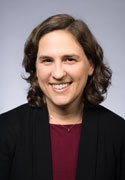 Wendi Heinzelman is the Dean of the Edmund A. Hajim School of Engineering and Applied Sciences at the University of Rochester. She is also a full professor in the Department of Electrical and Computer Engineering with a secondary appointment in the Computer Science Department at Rochester. During spring 2008, Dr. Heinzelman was a Visiting Erskine Fellow at the University of Canterbury in Christchurch, New Zealand. Dr. Heinzelman received a B.S. degree in Electrical Engineering from Cornell University in 1995 and M.S. and Ph.D. degrees in Electrical Engineering and Computer Science from MIT in 1997 and 2000, respectively. Dr. Heinzelman is a member of N^2 Women and SWE, a Distinguished Scientist of ACM Sigmobile, and a Fellow of the IEEE Communications Society, the IEEE Signal Processing Society, and the IEEE Computer Society.
Wendi Heinzelman is the Dean of the Edmund A. Hajim School of Engineering and Applied Sciences at the University of Rochester. She is also a full professor in the Department of Electrical and Computer Engineering with a secondary appointment in the Computer Science Department at Rochester. During spring 2008, Dr. Heinzelman was a Visiting Erskine Fellow at the University of Canterbury in Christchurch, New Zealand. Dr. Heinzelman received a B.S. degree in Electrical Engineering from Cornell University in 1995 and M.S. and Ph.D. degrees in Electrical Engineering and Computer Science from MIT in 1997 and 2000, respectively. Dr. Heinzelman is a member of N^2 Women and SWE, a Distinguished Scientist of ACM Sigmobile, and a Fellow of the IEEE Communications Society, the IEEE Signal Processing Society, and the IEEE Computer Society.
Dr. Heinzelman’s research interests span diverse areas—from wireless communications and networking to mobile-cloud computing to multimedia communications. Much of this work involves the design of advanced communication and networking protocols and architectures. Applications include providing better communications tools for soldiers in the field, understanding pollution in places such as India, enabling the continuous monitoring of wildlife and the environment, learning about family dynamics and healthy interpersonal communications, and designing a programming framework to support the development of health management applications. Heinzelman has contributed to 12 textbooks and has published in more than 50 journals and more than 100 conference and workshop proceedings. According to Google Scholar, she has been cited more than 39,000 times. Over her career, she has been the principal or co-principal investigator on more than 20 programs with combined funding support of nearly $11 million.
Kevin Johnson: Partner, Quinn Emanuel Urquhart & Sullivan, LLP
Click to Open Kevin Johnson, who has an electrical engineering degree from Cornell, has tried a number of cases to verdict. Mr. Johnson serves as lead counsel for such companies such as Sony, Samsung, Marvell Semiconductor, MediaTek, Hynix, Bio-Rad, and Salesforce.com. His practice focuses on litigating patent infringement, trade secret, unfair competition, trademark, copyright and licensing actions in Federal and State courts as well as the International Trade Commission. His experience ranges from representing Fortune 50 companies to smaller rapidly growing technology companies in disputes related to smart phones, microprocessors, wireless communications, semiconductor processing equipment, liquid crystal devices, consumer products, consumer electronics, medical devices, biotech and life science products, business method customer loyalty programs, computer software and graphics, telecommunications, and optical devices.
Kevin Johnson, who has an electrical engineering degree from Cornell, has tried a number of cases to verdict. Mr. Johnson serves as lead counsel for such companies such as Sony, Samsung, Marvell Semiconductor, MediaTek, Hynix, Bio-Rad, and Salesforce.com. His practice focuses on litigating patent infringement, trade secret, unfair competition, trademark, copyright and licensing actions in Federal and State courts as well as the International Trade Commission. His experience ranges from representing Fortune 50 companies to smaller rapidly growing technology companies in disputes related to smart phones, microprocessors, wireless communications, semiconductor processing equipment, liquid crystal devices, consumer products, consumer electronics, medical devices, biotech and life science products, business method customer loyalty programs, computer software and graphics, telecommunications, and optical devices.
Shervin Kheradpir: Vice President, Intel Architecture, Graphics and Software Director, IP Analytics
Click to Open Shervin Kheradpir is a vice president in the Intel Architecture, Graphics and Software Group and director of IP Analytics at Intel Corporation. He is responsible for developing analytic platforms that guide strategic IP planning and architectural decision-making for the core and visual computing platforms. In this role, Kheradpir leads the reimagination and reinvention of strategic planning through development and deployment of revolutionary new thinking and methodologies. Well-known in the industry as one of the pioneers and principal architects of the computer evaluation ecosystem, Kheradpir was among some of the key leaders that oversaw Intel’s and silicon valley’s explosive growth stage during the Moore and Grove eras.
Shervin Kheradpir is a vice president in the Intel Architecture, Graphics and Software Group and director of IP Analytics at Intel Corporation. He is responsible for developing analytic platforms that guide strategic IP planning and architectural decision-making for the core and visual computing platforms. In this role, Kheradpir leads the reimagination and reinvention of strategic planning through development and deployment of revolutionary new thinking and methodologies. Well-known in the industry as one of the pioneers and principal architects of the computer evaluation ecosystem, Kheradpir was among some of the key leaders that oversaw Intel’s and silicon valley’s explosive growth stage during the Moore and Grove eras.
Before his current role, Kheradpir was the general manager of Platform Evaluation and Competitive Assessment, where he pioneered and led the formation and evolution of multi-disciplinary firm-wide product, technology, strategic, and competitive business assessments. He also held the role of director of Performance Benchmarking and Competitive Analysis. Earlier in his Intel career, Kheradpir was a platform architect at Intel’s Platform Architecture Center, where he participated in the development and release of several pioneering industrywide performance evaluation standards.
Kheradpir joined Intel in 1989 as a technical marketing engineer shortly after completing his education. He holds bachelor’s and master’s degrees in electrical engineering, both from Cornell University. During his career, Kheradpir has led or been involved in several groundbreaking industry efforts in the areas of computer performance and user experience evaluation. Formerly, Kheradpir was a founder of Business Applications Performance Corporation (BAPCo) and served as its president.
Daniel Miller: Managing Director, The Roda Group
Click to Open Dan Miller is Managing Director of the Roda Group, a venture development firm that specializes in providing technology entrepreneurs with the environment and resources needed to ensure their ideas are successfully positioned in the marketplace.
Dan Miller is Managing Director of the Roda Group, a venture development firm that specializes in providing technology entrepreneurs with the environment and resources needed to ensure their ideas are successfully positioned in the marketplace.
He is the former president of, Ask Jeeves, Inc., a Roda Group affiliate company. He is the Chairman of CoolSystems, Inc., another Roda Group affiliate company. CoolSystems produces body cooling products that maximize human performance and healing.
At the end of 1994, Mr. Miller retired from his position as Executive Vice President of TCSI Corporation (Nasdaq: TCSI), a company he co-founded with his Roda Group partner, Roger Strauch. Mr. Miller retired from the Board of Directors of TCSI in June of 1997. TCSI is a leading provider of integrated software products and services for the global telecommunications industry.
Prior to TCSI, Mr. Miller was a systems engineer at Hughes Aircraft's Space and Communications Group where he was responsible for designing communications payloads for commercial communications satellites.
Mr. Miller received his Bachelor of Science in Electrical Engineering, with distinction, from Cornell University and his Master of Science in Electrical Engineering from Stanford University. He holds three patents in the areas of compression technology and wireless communications systems.
Mr. Miller is a member of the Board of Trustees of both the Chabot Space & Science Center and the Jewish Museum San Francisco. He is also a member of Cornell University's School of Electrical and Computer Engineering Advisory Board and University Council.
More info: http://www.rodagroup.com/principals.html#dan
Ellen Grant Piccioli: Director of Manufacturing Innovation, Worcester Polytechnic Institute
Click to Open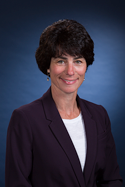 Ellen is directing the engagement and expansion of WPIs Manufacturing USA multi-disciplinary, multi-institutional and multi-center collaborative programs, and the development of new initiatives in the area of manufacturing innovation. Prior to WPI, Ellen consulted in the MIT Leaders for Global Operations (LGO) Program, and previously held leadership positions at Intel Corporation, Hewlett-Packard, Compaq, and Digital Equipment Corporation. Ellen is a member of Cornell University’s ECE (Electrical and Computer Engineering) Advisory Council, the Boston Museum of Science’s (MOS) Women in Science and Engineering (WISE) Committee (Co-chair), and the Board of Overseers at the MOS and the SpeakEasy Stage Company. Ellen received a B.S. with Distinction in ECE from Cornell University, and an M.S. in EE from the University of Michigan.
Ellen is directing the engagement and expansion of WPIs Manufacturing USA multi-disciplinary, multi-institutional and multi-center collaborative programs, and the development of new initiatives in the area of manufacturing innovation. Prior to WPI, Ellen consulted in the MIT Leaders for Global Operations (LGO) Program, and previously held leadership positions at Intel Corporation, Hewlett-Packard, Compaq, and Digital Equipment Corporation. Ellen is a member of Cornell University’s ECE (Electrical and Computer Engineering) Advisory Council, the Boston Museum of Science’s (MOS) Women in Science and Engineering (WISE) Committee (Co-chair), and the Board of Overseers at the MOS and the SpeakEasy Stage Company. Ellen received a B.S. with Distinction in ECE from Cornell University, and an M.S. in EE from the University of Michigan.
Michael Spencer: Emeritus Professor
Click to Open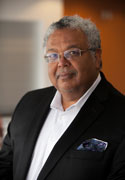 Electrical Engineer, Computer Scientist and Engineering Professor Michael G. Spencer was born in Detroit, Michigan. He grew up in Washington, D.C. and traveled to Ithaca, New York to study at Cornell University. He earned his B.S. degree in 1974 and his M.S. degree in 1975. Spencer worked at Bell Laboratories from 1974 to 1977 before returning to Cornell to receive his Ph.D. degree in electrical engineering in 1981.
Electrical Engineer, Computer Scientist and Engineering Professor Michael G. Spencer was born in Detroit, Michigan. He grew up in Washington, D.C. and traveled to Ithaca, New York to study at Cornell University. He earned his B.S. degree in 1974 and his M.S. degree in 1975. Spencer worked at Bell Laboratories from 1974 to 1977 before returning to Cornell to receive his Ph.D. degree in electrical engineering in 1981.
He joined the faculty of Howard University as an assistant professor in 1984. Spencer also founded the Materials Science Center for Excellence in 1984 and served as its director for the entirety of his career at Howard. He spent the next eighteen years working and researching at Howard, becoming a full professor in 1990 and the David and Lucile Packard Chaired Professor of Materials Science in 1999. During this time, Spencer also worked as a visiting scientist at the National Aeronautics and Space Administration (NASA)’s JET Propulsion Laboratory. In 1999, he returned to his alma mater, Cornell University as Professor of Electrical and Computer Engineering. He served as Associate Dean of Research and Graduate Studies for the College of Engineering from 2002 to 2008. Spencer is an Emeritus Professor in the School of Electrical and Computer Engineering at Cornell University.
Spencer directed the Wide Bandgap Laboratory where he continued his research on semiconductor materials like Silicon Carbide (SiC) and Gallium Nitride (GaN), as well as developing research on two dimensional semiconductors like graphene. He co-founded Widetronix, a company that builds low power long life betavoltaic batteries. Spencer has written over 130 publications concerning semiconductors and has also co-authored eleven United States patents.
In 1985, he received the Presidential Young Investigator Award from the National Science Foundation. Spencer also received the QEM (Quality Education for Minorities) Giants of Science Award and the Allen Berman Research Publication Award from the Naval Research Laboratory. He served as one of the directors for the National Science Foundation (NSF) Nano-Fabrication Network. Spencer was a member of the program committee of the American Vacuum Society and the International Conference on Silicon Carbide and Related Materials. Spencer has severed on the review of manufacturing-related programs at the National Institute of Standards and Technology (NIST), the panel on sensors and electron Devices for the National Research Council (National Academies) and the committee on assessment of solid state lighting for the National Research Council (a part of the National Academies of Science and Engineering) March 2011-present. He also held memberships in the Electronic Materials Conference Organizing Committee and the Compound Semiconductor Symposium Organizing Committee.
John Treichler: Co-founder, Applied Signal Technology
Click to Open John Treichler received his BA and MEE degrees from Rice University, Houston, TX in 1970 and his PhDEE from Stanford in 1977. He served as a line officer aboard destroyers in the US Navy from 1970 to 1974. In 1977 he joined ARGOSystems in Sunnyvale CA and then helped found Applied Signal Technology, Inc. in 1984 after serving for a year as an Associate Professor of Electrical Engineering at Cornell University. Applied Signal Technology, now a mission area within the Space and Airborne Systems (SAS) business unit of Raytheon, Inc, designs and builds advanced signal processing equipment used by the United States government and its allies for foreign intelligence collection. For three years he was the president of the Raytheon Applied Signal Technology business unit and continues as the unit’s Chief Technical Officer. He was elected a Fellow in the Institute of Electrical and Electronics Engineers (IEEE) in 1991. He was awarded the IEEE Signal Processing Society’s Technical Achievement Award in 2000 and its first Industrial Leader Award in 2016. He is the President of the IEEE Foundation, and in 2016 he was elected a member of the National Academy of Engineering. In 2019 he received the IEEE Signal Processing Society’s Norbert Wiener Society Award.
John Treichler received his BA and MEE degrees from Rice University, Houston, TX in 1970 and his PhDEE from Stanford in 1977. He served as a line officer aboard destroyers in the US Navy from 1970 to 1974. In 1977 he joined ARGOSystems in Sunnyvale CA and then helped found Applied Signal Technology, Inc. in 1984 after serving for a year as an Associate Professor of Electrical Engineering at Cornell University. Applied Signal Technology, now a mission area within the Space and Airborne Systems (SAS) business unit of Raytheon, Inc, designs and builds advanced signal processing equipment used by the United States government and its allies for foreign intelligence collection. For three years he was the president of the Raytheon Applied Signal Technology business unit and continues as the unit’s Chief Technical Officer. He was elected a Fellow in the Institute of Electrical and Electronics Engineers (IEEE) in 1991. He was awarded the IEEE Signal Processing Society’s Technical Achievement Award in 2000 and its first Industrial Leader Award in 2016. He is the President of the IEEE Foundation, and in 2016 he was elected a member of the National Academy of Engineering. In 2019 he received the IEEE Signal Processing Society’s Norbert Wiener Society Award.
Eugene Weber: Managing Partner, Weber Capital Management
Click to Open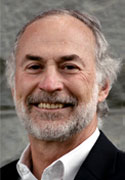 Gene is the Managing Partner of Weber Capital Management, LLC in San Francisco. He founded Weber Capital in 1994 to expand the U.S. equity portfolio for a London-based institutional investor. In 1999 Weber Capital raised its first fund for outside investors, and is now investing its fourth fund. The firm is a long term investor in micro-cap public companies and late stage ventures, with a focus on information technology, communications and medical devices. The firm was an early public investor in companies such as Entropic Communications, Fusion Medical, Polycom, and Veritas Software. Successful venture investments include Commerce One,Intertrust, Interwoven, and 2Wire.
Gene is the Managing Partner of Weber Capital Management, LLC in San Francisco. He founded Weber Capital in 1994 to expand the U.S. equity portfolio for a London-based institutional investor. In 1999 Weber Capital raised its first fund for outside investors, and is now investing its fourth fund. The firm is a long term investor in micro-cap public companies and late stage ventures, with a focus on information technology, communications and medical devices. The firm was an early public investor in companies such as Entropic Communications, Fusion Medical, Polycom, and Veritas Software. Successful venture investments include Commerce One,Intertrust, Interwoven, and 2Wire.
Gene graduated from Cornell in 1972 with a BS in Electrical Engineering. He then worked for 3 years as a design engineer and in product marketing for manufacturers of electronic components and subsystems. After receiving his MBA in Finance from the Wharton School in 1977, he joined McKinsey & Company in Los Angeles. He was a member of McKinsey's worldwide electronics industry practice group, and was resident in the Amsterdam, Netherlands office in 1979 and 1980. In 1983, Gene joined the investment management firm of Weiss, Peck and Greer in San Francisco, and became a partner in its venture capital group in 1984, and a partner in the parent firm in 1987. During his 11 years with Weiss, Peck & Greer, he made venture investments in 16 companies and was responsible for 11 other investments.
More info: http://www.webercapital.com/team.html
Jim Weisenstein: President, Graystone Consulting LLC
Click to Open Jim Weisenstein has 31 years of industry experience in building and managing businesses. As President of Graystone Consulting LLC, Jim is committed to facilitating the growth of entrepreneurial ventures in Northern California by providing business coaching, capital, and ongoing corporate governance. Jim is also currently an investor and board member for several new businesses in the region including Lighthouse Bank, a business-focused community bank, and NextSpace Inc., a co-working and innovation business community.
Jim Weisenstein has 31 years of industry experience in building and managing businesses. As President of Graystone Consulting LLC, Jim is committed to facilitating the growth of entrepreneurial ventures in Northern California by providing business coaching, capital, and ongoing corporate governance. Jim is also currently an investor and board member for several new businesses in the region including Lighthouse Bank, a business-focused community bank, and NextSpace Inc., a co-working and innovation business community.
From 2004-2007, Jim worked as part time instructor at California State University Monterey Bay, developing and teaching "Venture Formation and Financing", "Project Management" and "Financial Accounting" to undergraduates and graduates. Also during this period, Jim served as a Small Business Development Center counselor at the SBA funded regional center in Aptos, CA.
From 1998-2004, Jim invested in over 20 new ventures as a member of The Angel's Forum LLC in Palo Alto, CA. For three of these investments, Jim also served as a board member. Jim guided Luxxon Corporation, a mobile market image processing venture, through product development and series A/B financing; Jim helped Guardian Angel LLC through the launch and ramp of the first consumer market blood alcohol test product; and Jim led Light Engineering, a supplier of innovative motor/generator solutions, through product development and introduction while acting as interim Chief Operating Officer. Finally, in 1998 Jim co-founded Calle Cielo Cellars, leading the California wine venture to successful acquisition in 2001.
From 1979-1998, at Intel Corporation, Jim lead business and engineering teams chartered with the development, introduction and ramp of microprocessor, communications and memory products. Jim's work at Intel included the following:
- Leading the team chartered to deliver the mechanical, thermal and electrical interfaces for the new generation 64 bit microprocessor (Itanium);
- Managing the development of a 30 million PC Card faxmodem business in the Communications Products Division;
- Co-founding a new business unit chartered to deliver Intel Flash (nonvolatile memory) technology to the market in the form of PC Card products, including successfully launching and ramping the business to $20 M in revenue;
- Managing EPROM (semiconductor nonvolatile memory) product operations (200 people) responsible for yield improvement, cost reduction, design, delivery, and total quality management. (Intel maintained a profitable number one market share position in a highly competitive commodity marketplace during this period.);
- Serving as President and Board Member of the Personal Computer Memory Card International Association, during which time he grew the association from 15 to over 500 member companies while developing and releasing the PC Card standard for portable computing. As President, Jim managed a $4M operations budget through a full-time Executive Director and staff of 14 employees.
Jim received his BSEE and MEEE from Cornell University. He currently resides in Northern California with his wife and three daughters.

